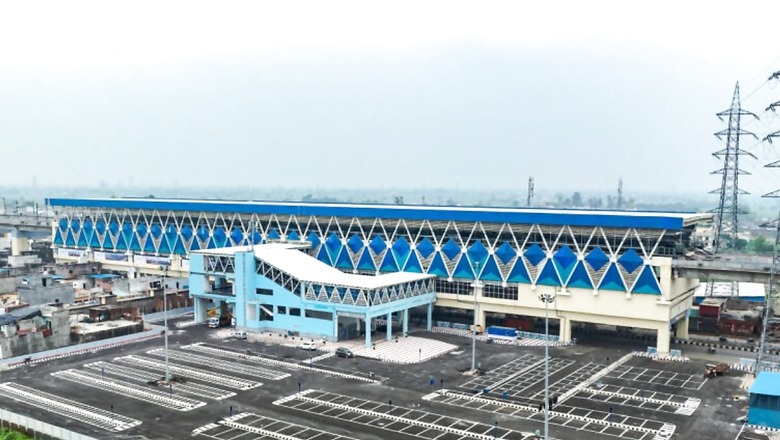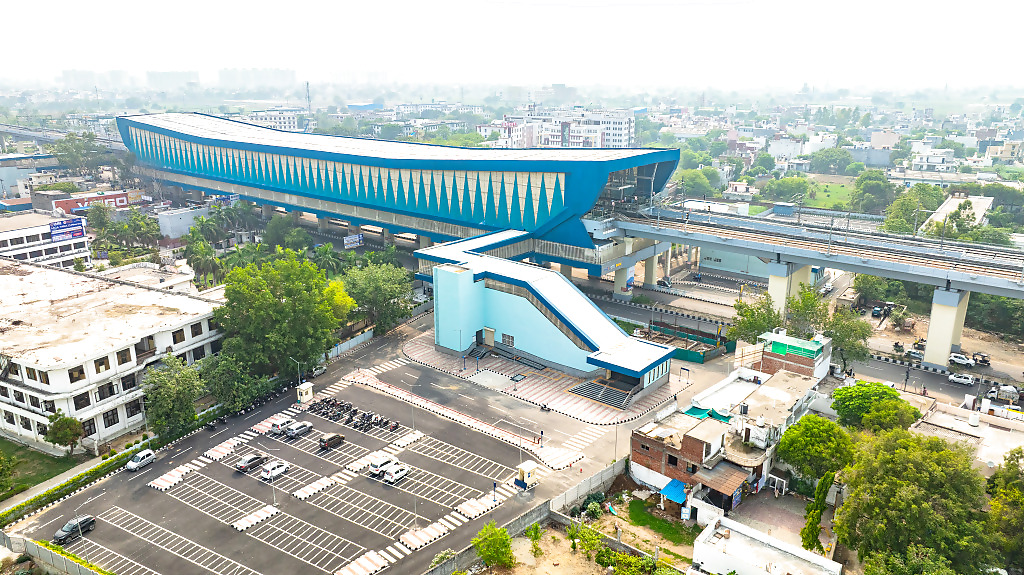
views
The National Capital Region Transport Corporation (NCRTC), which is building the Delhi-Meerut Regional Rapid Transit System (RRTS), will provide extensive parking facilities to commuters of the Namo Bharat trains along the entire corridor.
To encourage the use of public transport, more than 8,000 vehicles — 1,600 cars and over 6,500 two-wheelers — will be accommodated in the parking spaces being developed at the RRTS stations, the body said on Thursday.
On the 25 stations across the entire RRTS corridor from Delhi to Meerut, parking spaces are being developed considering the expected footfall at these stations.
“The biggest parking space is at Meerut South station where around 300 cars and 900 two-wheelers can be parked. The second big parking space is being developed at Sarai Kale Khan station in Delhi where around 275 cars and 900 two-wheelers can be parked. In these parking spaces, electric charging stations are also being installed to boost convenience, clean energy adoption, and efficient last-mile connectivity,” the NCRTC said.

Further, keeping in mind the movement of specially abled passengers, separate places have been earmarked for parking their vehicles and ramps have also been made for easy entry into the station so that they can avail the facility to travel in Namo Bharat train seamlessly.
The Namo Bharat train services are connecting regional nodes across the national capital region with high speed. The RRTS stations are strategically located at an average distance of 5-10 kilometres.
Ample spaces have been dedicated for commuters to park their personal vehicles at the stations, the statement added. This will not just offer a comfortable, safe and reliable ride of Namo Bharat but also significantly reduce the load of private vehicles on the Delhi-Meerut route. In the longer run, it will reduce road accidents and help in reducing air pollution as well, they said.
“It is estimated that with the implementation of the entire Delhi-Meerut corridor, the share of public transport will increase from the current 37 per cent to 63 per cent. NCRTC is also working on providing various options of last-mile connectivity to the commuters and an expression of interest for providing various types of feeder services on all 25 stations has recently been invited,” the statement added.
At present, there is no parking fees for the commuters coming for pick and drop only as they can park their vehicles free of cost for the first 10 minutes.
Beyond that, a fee structure will be applicable, which is, for up to six hours, Rs 5 for bicycles, Rs 10 for two-wheelers, and Rs 25 for cars; for 6-12 hours, Rs 5 for bicycles, Rs 25 for two-wheelers, and Rs 50 for cars; and after 12 hours until the end of RRTS operation hours, Rs 10 for bicycles, Rs 30 for two-wheelers, and Rs 100 for cars.

Night parking during non-operational hours will cost Rs 20 for bicycles, Rs 60 for two-wheelers, and Rs 200 for cars.
A 34-km section of this corridor is already operational for the public with eight RRTS stations where parking facilities have been provided to the commuters.
Facility to park auto rickshaws is also available in these parking lots. Special provisions have been made at the stations for pick-up and drop-off facilities.
In addition, the NCRTC is also planning to install battery-swapping stations in its parking areas for both commuters and last-mile service providers. This initiative will promote sustainable modes of transport at a pocket-friendly cost for commuters.
The 34-km operational section between Sahibabad and Modi Nagar North of the Delhi-Ghaziabad-Meerut RRTS corridor connects Sahibabad, Ghaziabad, Guldhar, Duhai, Duhai Depot, Murad Nagar, Modi Nagar South, and Modi Nagar North. The NCRTC is expecting to complete the entire stretch between Delhi and Meerut by June 2025.
















Comments
0 comment